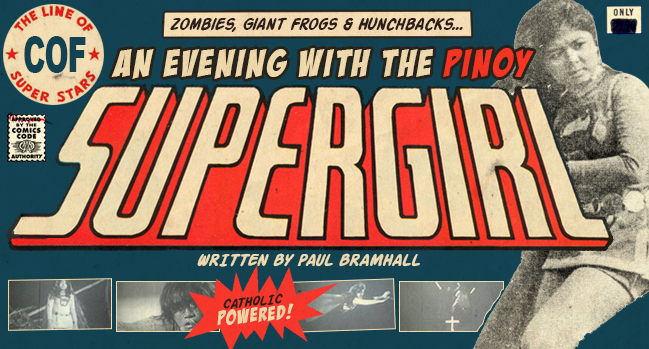
Living in Manila, the capital of the Philippines, always brings plenty of surprises, and so it was one evening in early November 2016, I received the following text message:
“Hi everyone! 7pm tomorrow I am introducing a secret Makati screening of the super-rare, super-strange 1973 Pinoy SUPERGIRL! Interested? txt me for details!”
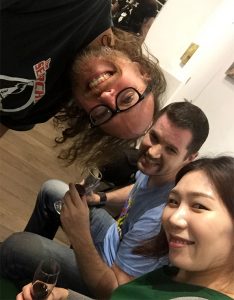
Andrew Leavold photobombs Paul and friend.
The number identified the sender as a certain Andrew Leavold, the Australian filmmaker behind the Filipino cinema documentaries The Search for Weng Weng, and The Last Pinoy Action King. I’d first met Leavold in the basement of an old vintage store which housed his impressive VHS collection, on the Sunshine Coast in Australia, where he screened an early edit of The Search for Weng Weng in 2013. We’d stayed in contact since then, and after I was relocated to Manila with my work in November 2015, it seemed inevitable that our paths would one day cross on Filipino soil.
Leavold was in Manila to begin filming his third documentary on Filipino cinema, one which, almost by default, promises to be entertaining. The focus will be on the bomba films of the 70’s that were made during the Marcos era, and for those wondering, bomba is the Spanish word for ‘bomb’, which in the context of the genre was short for ‘sex bomb’. While over in Japan the Nikkatsu studio was churning out its own brand of bomba with its Roman Porno movies, the Philippines was happily doing its own thing, in a genre made in an era which has made them largely forgotten to modern day Filipino audiences.

Viva La Bomba!
Bomba movies aren’t the only forgotten Filipino cinema though, as during the 70’s the country also had its own unique style of superhero movie. Today we may have the Marvel Studios releasing a never ending steam of superhero flicks, and Warner Brothers doing the same for DC, but back in the 70’s it was a different story. At the time, it seemed to be Turkey that had the monopoly on making Marvel Comics adaptations. For those that don’t believe me, simply research the movie 3 Dev Adam, and prepare to be amazed at a tale which has Captain America teaming up with masked Mexican wrestler El Santo, to stop evil super villain Spider-Man from terrorizing the streets of Istanbul.
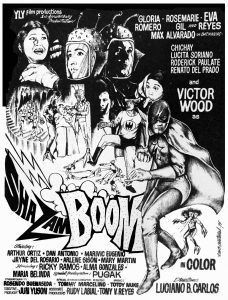
“Shazam Boom” Newspaper Advertisement
This movie exists, and even better, is still available for viewing. The same sadly can’t be said for Filipino cinema of the same era. Be it for reasons such as the productions were never intended to be more than temporary entertainment, poor storage conditions, or destroyed during the Marcos era, sadly many Filipino movies from the 70’s are lost to the sands of time. It’s a shame, as the country had its own line of DC movies. There was a Pinoy Superman, with 1973’s Zoom, Zoom, Superman!, and a Pinoy Batman that featured in Fight Batman Fight! from the same year. Throw in the likes of Batwoman and Robin from 1972, Fantastika vs. Wonderwoman from 1976, and even Shazam got his own movie in 1974 with Shazam Boom. Do we really need a Hollywood Justice League movie!?
The one movie which was largely responsible for kicking off this wave of Filipino DC superhero movies wasn’t any of the above though, it was a movie called Supergirl from 1973. Like all of the mentioned movies, Supergirl was also accepted as being lost, the only remnants of it ever existing the original posters that were used to promote it at the time, and those who have memories of it showing on Filipino TV during the 80’s.
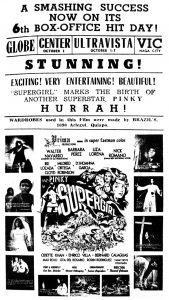
“Supergirl” Newspaper Advertisement
Every genre has its own holy grails – for kung fu fans it’s the version of Bruce Lee’s The Big Boss which has the infamous saw in the head scene. For Japanese chambara flicks it’s the rumoured alternate ending of Zatoich Meets the One Armed Swordsman, in which Jimmy Wang Yu walks away the victor. For Leavold, it was the Filipino version of Supergirl.
Proving that not all holy grails are out of reach, Leavold did finally track down a copy of Supergirl on a beat up 16mm reel, and like any true film fan (kung fu community please take note), he was eager to share it with those who enjoy the more bizarre corners of world cinema as much as he does. If the screening was a secret, then the location was even more so. Screening at the Archivo Gallery in Makati, the location of said gallery was hidden away via a small door leading to a set of stairs, at the end of an alleyway between a pair of warehouse complexes. The gallery itself initially seemed like an odd choice to show a pulpy 1973 black and white superhero movie, however a brief glimpse into the kitchen area, in which the staff were busy preparing finger food, revealed its true nature. Adorned on the walls of the compact working space were several original posters of vintage bomba movies, from Silip (readily available on a feature packed DVD from Mondo Macabro) to Scorpio Nights.
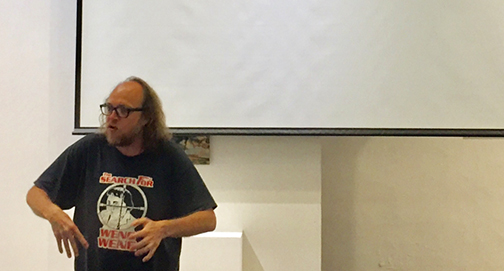
Andrew Leavold giving some commentary before rolling Supergirl.
Suddenly everything fell into place, and Leavold revealed that the curator of the gallery has a huge collection of vintage bomba material, prime fodder for his new documentary. Before the movie starts Leavold provides one of his typically enthusiastic introductions to what we’re about to watch. Yes the picture and sound quality is beat up, yes there’s no English subtitles, and yes this isn’t your typical Saturday night movie in this post-millennial era. But it IS the Filipino Supergirl, so quite frankly, who cares about any of that. Leavold’s energy is contagious, and with an audience stocked up on several cans of already consumed wine and Red Horse beer, the ever so slight level on intoxication provided the perfect mind-set for a trip into the forgotten depths of Pinoy superhero cinema.

The credits sequence for 1978’s Superman cost millions of dollars to produce. Supergirl’s credits were done for a couple of pesos and some balut.
It’s safe to say that Supergirl did indeed live up to Leavold’s hype. Released more than 10 years before Hollywood would concoct its own version of Supergirl, with the 1984 Helen Slater starring oddity, the Filipino version very much brings its own flavour to the characters mythos. A pair of sisters and a brother live in a humble abode out in a countryside barrio, subjected to constant pillaging and harassment from a group of local bandits, and during one of their raids the sister who can see is knocked unconscious. It’s while she’s unconscious, that she’s visited by a 30 foot tall Virgin Mary, who gives her a ring that, when she kisses it, turns her into Supergirl. Yes, Supergirl is a Catholic, powered by the mother of Jesus no less. Who knew?

A Pinky film (not to be confused with a Pink film).
These Filipino Catholic influences permeate throughout the production, so those hoping to see a re-envisioning of Krypton, or how the threat of Kryptonite is dealt with, are most definitely in the wrong place. Supergirl herself is played by local star Pinky Montilla (billed in the credits as just Pinky). I’ll be honest and say, having no knowledge of Pinoy stars from this era, that I was expecting the blind sister to become Supergirl. The actress who plays the blind sister is quite slender and slim, while Pinky is carrying a little baby fat, so good on the Philippines for not adhering to body stereotypes of what a superhero should look like, even if it’s not as applicable now as it was then.

The funk of forty thousand years.
Pinky appeared to have the superhero market covered, as she also played the role of Batgirl in Fight Batman Fight! made the same year, and would go on to play Fantastika in 1976’s Fantasitka vs. Wonderwoman. After a decade of working in the film industry, she retired in 1980 and is believed to have immigrated to the U.S. It’s difficult to ascertain if Pinky is actually a good actress or not, as she (amusingly) plays her role deadpan from start to finish, and frequently seems baffled at her ability to turn into Supergirl, while never questioning her ability to do so. Unlike the Supergirl from the comics, the only power she inherits is that of flying, and for a 1973 production the flying effects are surprisingly well done. Refreshingly, in an age of mass CGI pixel destruction, this means that whenever she’s faced with bad guys, her form of attack is the straightforward approach of using her fists and feet to send them into oblivion, which she does with gusto.

King Kong who?
Her rival comes in the form of an evil sorceress played by Odette Khan. What’s striking about this fact is that the 1984 Hollywood adaptation would use the exact same type of villainess, in the form of Faye Dunaway’s occult practicing witch. Is it possible that screenwriter David Odell had somehow seen the Filipino version of Supergirl, before scripting the American take on the character? Of course its speculation, and all indicators would point to it being highly unlikely, not least because if it ever did get shown Stateside, I’m sure DC would be all over it for infringing copyright laws. However it is a remarkable similarity, and definitely raised a few eyebrows for those familiar with both movies.

Pinky’s Supergirl predates Helen Slater’s by over 10 years.
Khan’s character is delightfully over the top, and as an actress she’s still active in the local film industry today, with Supergirl being one of her first major roles. She keeps a bulging eyed hunchback as a servant, whom she periodically whips as a display of authority, and her mission is to create a serum that will bring her daughters dead husband back to life. Said husband is kept in an open casket in the basement, watched over by the hunchback and daughter, hoping that he’ll be able to be brought back to life soon. Suddenly Faye Dunaway’s standard plans at world domination seem dull in comparison to such a wacky premise.

“Creatures crawl in search of blood… to terrorize y’awl’s neighbourhood…”
Khan’s plans eventually do succeed, but not before she attempts to bring a dead frog back to life, which results in it not only returning to the world of the living, but also expanding to become a Kaiju sized monstrosity, with a deadly tongue to boot. With no Godzilla around to stop the gigantic frog’s deadly rampage through the barrio, it’s up to Supergirl to give it a combo of left and right hooks to the face, and save the village from total destruction. The frog is far from the finale though, with Supergirl also having to deal with the harmless zombie version of Khan’s son-in-law, who comes back to life when none of them are watching, wanders off, and becomes attached to Pinky instead of his widow. What other superhero movie throws in a love triangle between the superhero, the villainess’s daughter, and her dead husband who has come back to life!?

It’s adobo. It’s a lumpa. It’s Supergirl!
Ultimately, Khan’s serum ends up reviving all of the dead townsfolk from the local cemetery, leading to an onslaught of the undead that she has control of, and it’s up to Supergirl to save the day. As if ending a superhero movie with a finale that pits the hero versus a horde of the undead is not entertaining enough, her method for dealing with them is about as Filipino as it gets. Luring them to the local church, she grabs one poor zombie and drags him in like a child who doesn’t want to visit the dentist, forcing his hand to make the sign of the cross on his forehead, at which point he falls down dead (again). The others aren’t so lucky, and end up with a variety of kicks and punches to the face instead, but it’s the principle that matters.

Truth, Justice, and the Filipina Way…
The penultimate showdown sees Pinky’s Supergirl facing off against Khan’s whip wielding sorceress, who can now evoke fireballs from the lash of the whip. Naturally, the fight ends up on the rooftop of the church, giving Supergirl a distinct advantage considering we know the origin of her powers. Will the horde of zombies return to their graves? Who’s going to get rid of the giant frog corpse? Will the love triangle with the undead husband be resolved? All of this and more is at stake, and despite the goofiness of it all, by the end you actually find yourself caring.

Hadouken!
While Supergirl is far from being high art, neither are the current spate of Hollywood superhero movies, however what it certainly has is a lot of heart. It’s a fantastic find for Pinoy cinema, and the unearthing of a movie long considered lost can’t help but make you wonder how many of the other lost movies are out there somewhere. Maybe sitting on an ancient VHS having been recorded off the TV many years ago, or in some dusty old cinema back room on a reel. The discovery of Supergirl at least gives us a glimmer of hope, that maybe one day we’ll also be able to enjoy the delights of Fight Batman Fight! and Zoom, Zoom, Superman!

Hail Mary, full of grace. The Lord is with Supergirl.
If anyone can find them, most likely it’s going to be Leavold, with his unflinching dedication to ensuring the memory of Filipino cinema long forgotten is brought back for a modern audience. As the countries cinema continues to improve, thanks to the likes of directors like Erik Matti and Pedring Lopez, here’s hoping there are more opportunities to go digging into the past, and if one thing is for sure, whatever’s unearthed is never anything less than entertaining.
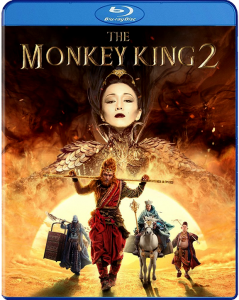

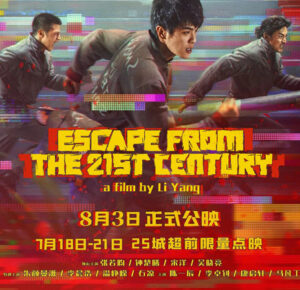
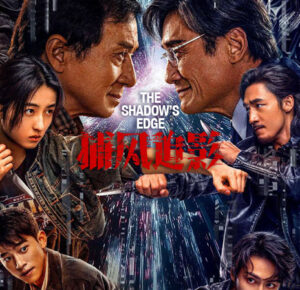
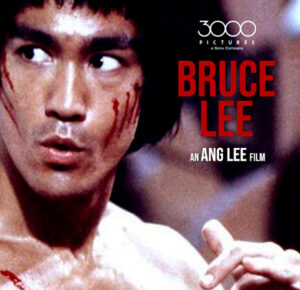
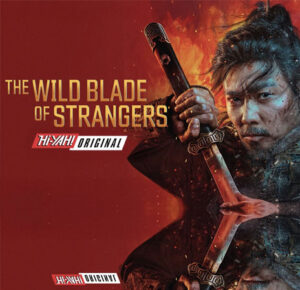
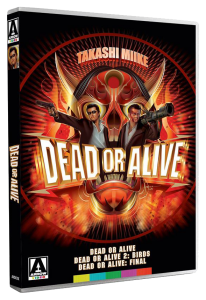
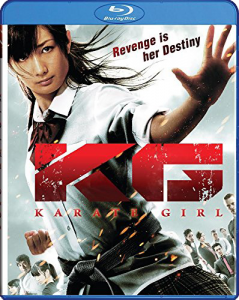
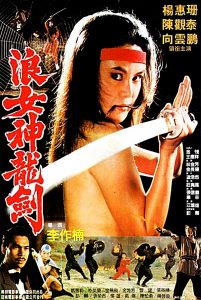
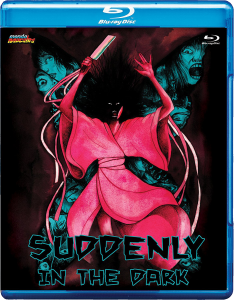

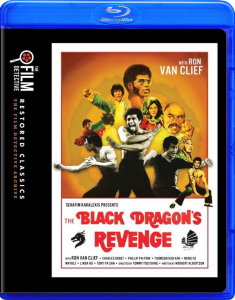

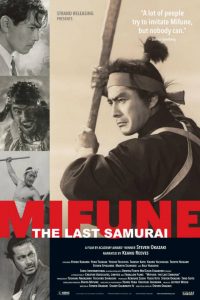



















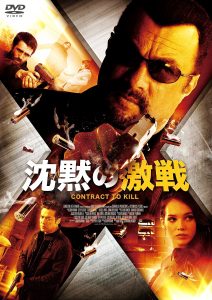

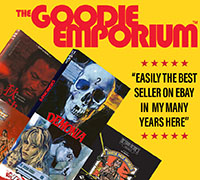

22 Comments